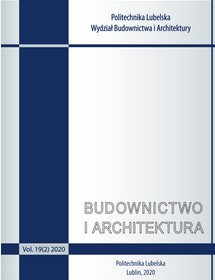The acoustic climate of spaces located under overpasses in the context of adapting them for outdoor public events – a pilot case study
The acoustic climate of spaces located under overpasses in the context of adapting them for outdoor public events – a pilot case study
Author(s): Elżbieta Komarzyńska-Świeściak, Piotr KozłowskiSubject(s): Music, Architecture, Rural and urban sociology, Environmental interactions
Published by: Biblioteka Politechniki Lubelskiej
Keywords: architectural and acoustical design; public space; bridge underspace; environmental acoustics; urban acoustics;
Summary/Abstract: Due to the current shortage of traditional public space because of its privatization, commercialization, and securitization, there is an urgent need to reclaim areas affected by motorized traffic in the urbanized areas. On the other hand, the process of adapting them for new purposes should be carefully carried out, addressing several issues, among them environmental acoustics. This study is meant to contribute to our understanding of acoustic conditions of a general model of the bridge underspace. Therefore, the aim of the research was to examine the existing acoustic climate by measuring noise levels and comparing them with equivalent acceptable noise levels for the expected type of space development and Noise Rating curves. In this research, a pilot case study approach was used, as measurements were taken for a chosen space located under an elevated road that represents certain criteria set by the researchers. The results allowed us to: (1) verify the relationship between the geometry of the bridge underspace and the noise levels, (2) assess the initial acoustic conditions in terms of possibilities of acoustic adaptation of the examined space for outdoor public events, and (3) formulate hypotheses and preliminary assumptions for the planned further and broader studies of the issues raised in this article. The presented results and their analysis show that it is possible to bring the acoustic conditions in the studied space to the state required for public or cultural meeting spaces. In comparison with earlier findings, the research undertaken appears to be pioneering and the results can be used as valuable input for further research on this topic.
Journal: Budownictwo i Architektura
- Issue Year: 20/2021
- Issue No: 4
- Page Range: 63-90
- Page Count: 28
- Language: English

